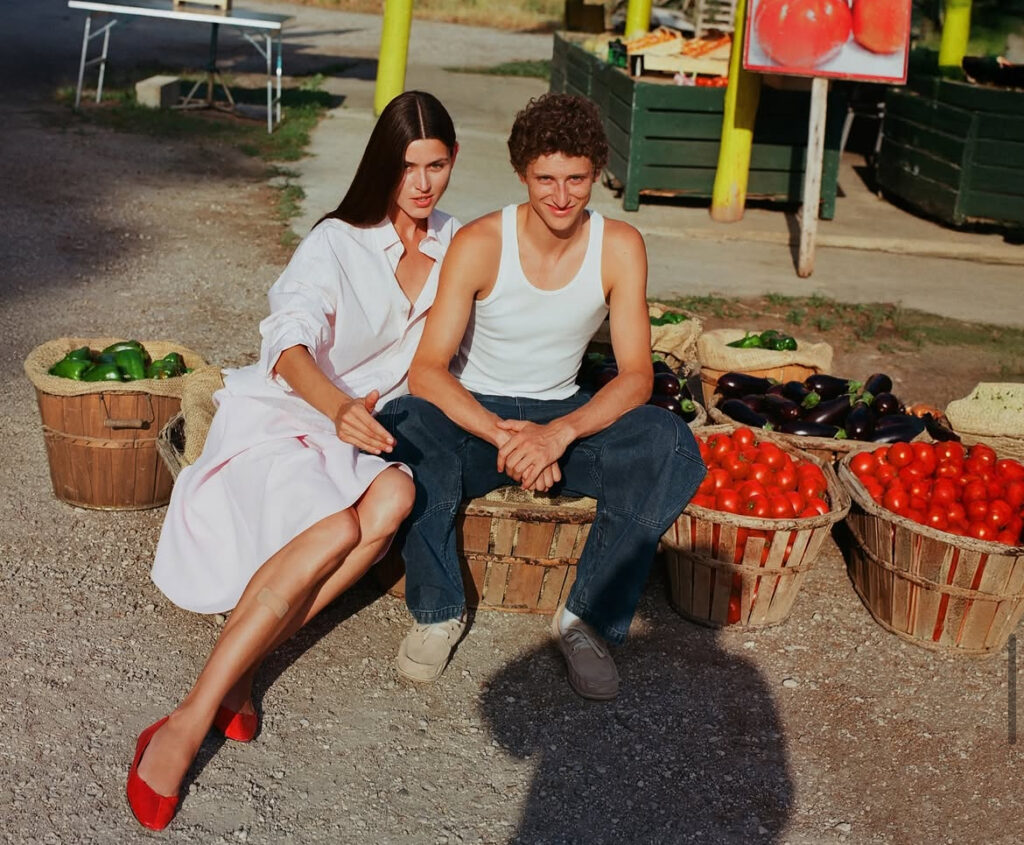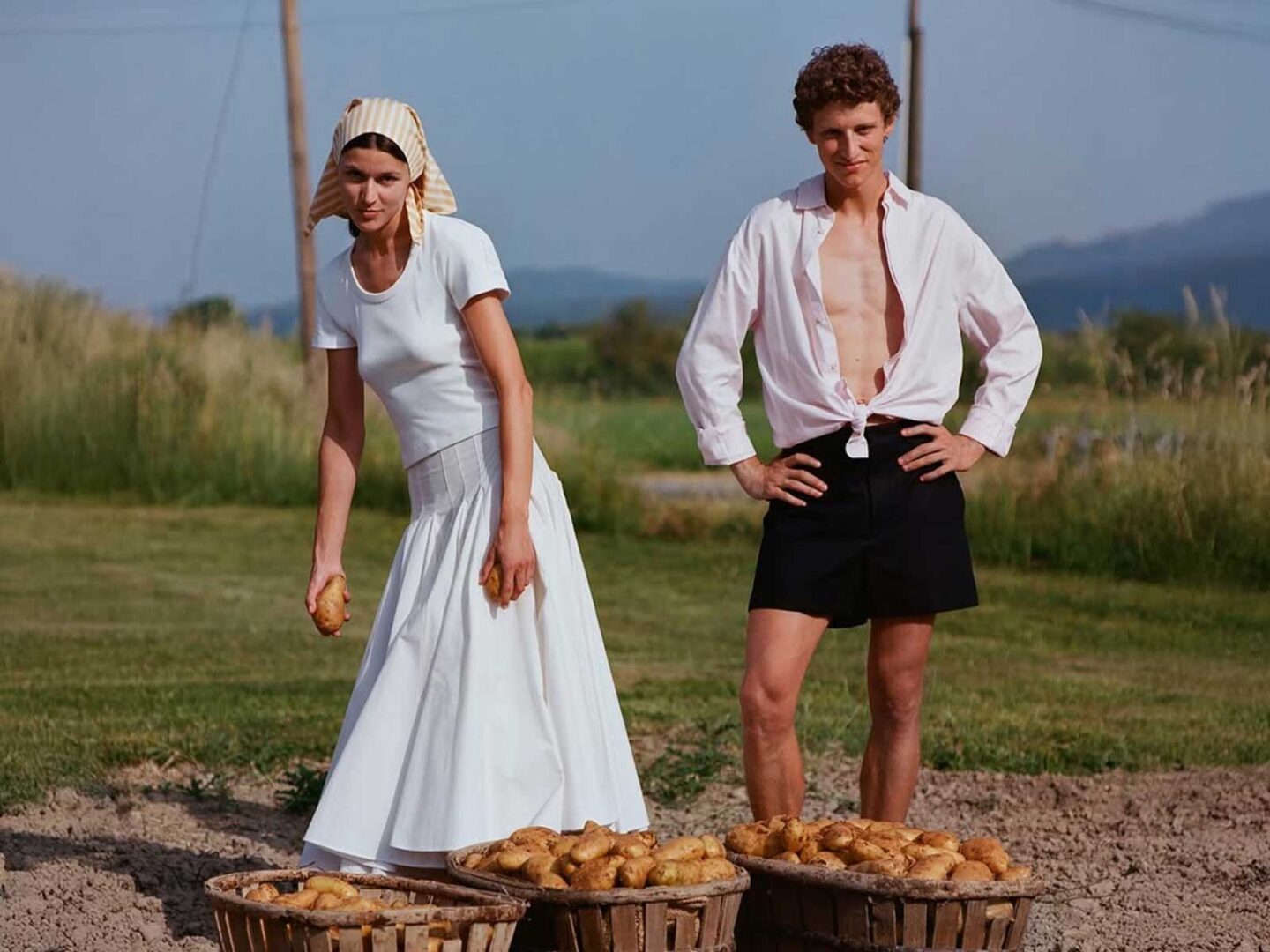As fashion consolidates its position as one of the most complex and revealing visual languages of our time, a trend is emerging with force that, due to its conceptual ambivalence, deserves special attention: poor opulence. This oxymoron—which combines the appearance of scarcity with the codes of luxury—expresses a growing fascination with rural aesthetics, reinterpreted from the comfort of privilege. Beyond a simple stylistic trend, this new sensibility reflects broader cultural tensions: the desire to escape urban vertigo, the idealization of rural life, and the transformation of austerity into a status symbol.
The rural reconstructed from privilege
Poor opulence, in its most synthetic form, can be understood as the luxurious reinterpretation of the visual codes associated with peasant life. Headscarves, raw linen, artisanal knitwear, loose silhouettes, and textiles evoking the simplicity of traditional rural dress: all of this is presented today through a prism of studied sophistication, oblivious to any real notion of precariousness. The paradox is evident, even deliberate: opulence is disguised as poverty.
This tension was clearly articulated by Simon Porte Jacquemus in his SS26 collection, Le Paysan, in which the designer pays tribute to his childhood in Provence, France. The show, set in a rural setting in the Gardens of Versailles, featured linen tunics, vegetable-shaped clutches, gavroche hats, and garments evoking agricultural life. However, the atmosphere was anything but arduous or earthly: it was an idyllic, almost dreamlike vision of country life.
The designer’s own assertion: “You can take the boy from the countryside, but not the countryside from the boy” serves as a leitmotif of this trend: a search for authenticity through artifice, where biographical references become a resource for emotional branding rather than a testament to class or lived experience.
A transversal aesthetic: from Prada to Hermès
This fascination with the rural is not limited to Jacquemus. During the SS26 season, multiple fashion houses incorporated visual elements of peasant imagery into their collections. Prada proposed a straw hat reminiscent of both the conical architecture of the Italian trullo and the Asian dǒu lì, the typical hat worn by peasants in various regions of China and Southeast Asia. This cultural hybridity raises questions about aesthetic appropriation in a globalized market.
Giorgio Armani, for his part, introduced a reinterpretation of the estropeta, traditionally associated with rural Mediterranean cultures, now stripped of its original functionality and reconfigured as a symbol of ethereal elegance. Brands such as The Row, Loro Piana, Setchu and Lemaire also presented silhouettes that evoke the artisanal, the natural and the essential, aligning themselves with an aesthetic narrative that seeks to offer an alternative to the vertigo of techno-capitalist modernity.
From nostalgia to symbolic capitalization
This aestheticization of the rural cannot be understood without considering the current sociopolitical context. The resurgence of the peasant imagery in fashion is not unrelated to the climate of global insecurity, ecological collapse, and the growing disaffection with urban centers. The countryside, with its promise of slowness and proximity, becomes a symbolic refuge. However, as is often the case in the fashion industry, this gesture of return does not imply a true structural transformation, but rather a superficial revaluation of a historically marginalized condition.
Thus, poor opulence not only aestheticizes rural poverty, but, in many cases, romanticizes it and commodifies it. Craftsmanship is celebrated, but without compromising the conditions of artisans; the codes of an austere life are emulated, but without renouncing exclusivity or profit margins. This dynamic reveals an ethical tension at the very heart of this trend: is it possible to pay homage without exoticizing? Can we speak of humility from a position of privilege?
It is worth asking whether poor opulence represents a legitimate critique of contemporary acceleration and the cultural homogenization imposed by the market, or whether it is a new form of elitist escapism. At best, it could be understood as an opportunity to revalue ancestral knowledge, sustainable practices, and a more human aesthetic. At worst, it becomes a visual farce that exploits precariousness to generate desire and exclusivity.
Fashion, as a privileged reflection of the cultural tensions of its time, has the capacity to convey powerful messages. However, when these messages are stripped of context and presented solely as aesthetic language, they risk reinforcing the very logic they seek to challenge. Poor opulence, in its most critical form, should invite profound reflection on production, the distribution of value, representation, and the place of the other in the fashion system. Otherwise, we would not be facing a true redefinition of austerity, but simply another form of out-of-touch opulence.

Sigue toda la información de HIGHXTAR desde Facebook, Twitter o Instagram
